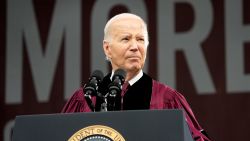Labor unions seem to be a critical topic right now. Teachers, medical professionals, digital media employees and e-commerce workers have all entered the national conversation in recent months, either for their attempts to unionize or their calls to strengthen workers’ rights.
In theory, their demands are well supported by the American public. According to a recent Gallup poll, 64% of Americans approve of labor unions. That’s a five-year high, and the third-highest approval number since 1970.
However, actual union membership rates are relatively low. Data from the Bureau of Labor Statistics reveals the general union membership rate for 2018 was 10.5%, which is about even with the numbers from 2017. However, that percentage represents a precipitous overall decline in union membership since comparable data was first released in 1983. That year, more than 20% of workers belongs to a union. Over time, that number has dropped steadily by almost half.
The economy is a big factor
What kind of picture do these numbers paint? In general, high support for labor unions is seen as a good thing. “America’s approval of labor unions tends to go higher at times when the economy is doing well,” said Mohamed Younis, Gallup editor-in-chief. “When the economy is really struggling, people across the board, regardless of their partisanship, see unions less favorably.”
Younis contrasts the recent figures to low union support seen in 2009-2012 and other periods of economic weakness.
What these numbers may or may not reflect is the recent turmoil brewing within groups of unionized workers fighting for better rights and non-unionized workers attempting to organize. Early in 2019, unionized teachers across the country organized strikes and walkouts over concerns about pay, staffing and class sizes.
The continued growth of Amazon has sparked several labor concerns in recent months. The retail behemoth’s plan to offer one-day delivery sparked an intense debate with the leader of a major workers’ union who argued such demands could put workers in danger if Amazon didn’t increase their staffing to match the new workflow. During Amazon’s much-feted Prime Day in July, groups of Amazon workers and allies walked out to protest what they claim are unfair working conditions.
So is the news
While Younis says the major factor of Americans’ view of labor unions seems to be the economy, he says the prevalence of labor stories in the news could also play a part, as does one’s proximity to labor unions and their issues.
“While the short-term news cycle is not at play as much as reflections of how the economy is doing, we have found within our polling, generally, that the news does tend to affect people’s awareness and opinions of unions.”
He points out that because the percentage of Americans involved in a union is very small — 10.5% — most people who have opinions on unions aren’t in one themselves.
“Literally 90% of people involved in this poll aren’t members of a union, so they form their opinion on unions from other sources, whether it’s the news or a family member who belongs to one,” Younis said.
In fact, Gallup’s data finds non-union people who live in a household with a union member are much more likely to view unions positively.
There’s one more wrinkle in the tricky relationship between labor activity and people’s views of it. Younis says that while union membership is generally not related to party affiliation, those with pro-labor views are likely to view unions more favorably if they are being undermined in some way.
“People will react to a lot of these very politicized terms and institutions,” he says. “A very liberal person who is pro workers’ rights, who happens to be living at a time when workers’ rights are being violated, or when there is a president that may be colliding with unions, that’s going to affect their outlook.”
While unionization and workers’ rights are bound to stay at the forefront of the conversation through the 2020 election, there are other economic factors that could affect how such issues are perceived. Younis says tariffs and trade wars could have a big impact on union perception if they were to affect jobs or labor opportunities.
























